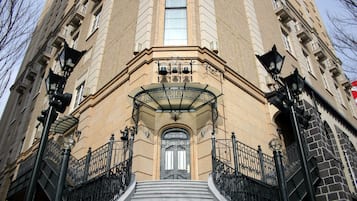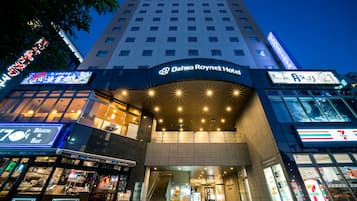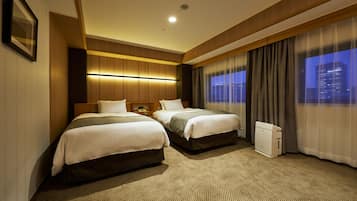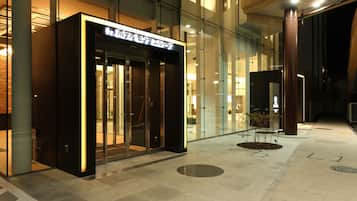Our Sendai Travel Essentials include all of the important information you need to have an incredible time on your travels to Japan's Tohoku Region. We will examine such things as the local climate, the best time to travel, electricity type, emergency phone numbers and currency. We'll also take a look at transport in and around Sendai including how to get to your hotel and explore the region.
Finally, you'll learn about some of the best festivals and events, the most popular places to see and other things to do. This handy guide will be the key to enjoying a fantastic holiday in Sendai.
When is the best time to travel to Sendai?

- Sendai's climate is classified as humid subtropical, with warm, wet summers and cool, dry winters.
- The most rainfall can be seen from July to October, averaging around 17 cm per month over this period.
- The warmest months of the year are July to September, with an average high temperature of 26.6° C during this period.
- The best time to visit is during the spring, from March to May, when temperatures are warm but not overly hot. To stretch your budget further, think about visiting between September and November, when there's fewer crowds and prices are generally lower.
Sendai basics

- Plug type: The plug type is either a 2-prong ungrounded outlet or a 3-prong grounded outlet.
- Electricity: Electricity is 110 volts.
- Currency: The currency is the Japanese yen.
- International dialling code: The international dialling code is +81 22.
- Emergency telephone number: For emergencies, call 119 for ambulance or fire, and 110 for police.
See also
- 10 Best Local Dishes from Sendai

10 Best Local Dishes from Sendai
Japan - 10 Best Local Restaurants in Sendai

10 Best Local Restaurants in Sendai
Japan - 9 Best Family Things to Do in Sendai

9 Best Family Things to Do in Sendai
Japan
How to get to my hotel in Sendai?

Most people arrive in Sendai via Tokyo, and getting to your Sendai hotel from Japan's most famous city is actually quite easy. Train and bus services run to town, and travelling here takes a little over an hour and a half. It's inexpensive and serviced by multiple lines. It is possible to travel directly here as well, with access via airport, railway, bus, car or port.
Airports: If you wish to fly directly into Sendai, it's served by Sendai Airport, which is located in the adjacent town of Natori. It's around 13 miles southeast of the city centre.
Major train stations include the JR East Sendai Station, the main transport hub of the city. It's served by 7 different JR lines and is one of the major stations on the Japanese railway system. Trains run here from the airport, a trip that takes about 20 minutes. The station also connects to the Sendai underground, making it quite a convenient means of travel.
Ports: The Port of Sendai is another means of visiting the town. Ferries connecting Sendai to the ports at Tomakomai and Nagoya stop here and run regularly.
How to get around Sendai?

Travel tips
In general, the best way to get around Sendai is the Loople Sendai bus network, which is designed just for visitors. You can buy a Loople day pass for unlimited rides. This day pass is not valid on regular city buses, however. To take local buses and the underground, you'll want the Sendai Area Pass, which is good for 1 day and can only be used by foreign visitors. The 2-day Sendai Marugoto Pass is a similar deal but lasts longer and can also be used by Japanese residents. Passes can be purchased at JR Sendai Station.
Underground system
Sendai has 2 underground lines. The Namboku Line runs from north to south, and the Tozai Line runs east to west. Both intersect at Sendai Station. The underground, however, is more often used by local commuters than visitors, and it stops at fewer major sites. While the underground is efficient and runs on a regular schedule, it's less likely to be useful to travellers looking to get around to see all the major points of interest, and it may feel less welcoming to visitors as well.
Taxi and rideshare apps
Sendai features several taxi services, including Sendai Chuo Taxi Co. You can flag a cab in front of most train stations. Uber also operates in Sendai, so you can hail a rideshare with your app. The JapanTaxi app can also be useful in finding a cab here. There have been some issues with taxi companies in Japan protesting against and even interfering with rideshares, which they see as intruding on their business territory, but by and large, taxis and rideshares should be a safe and reliable way to get around.
Bus network
Sendai has a very reputable, efficient and useful bus network. The most popular of these is the Loople Sendai. This is a loop bus system that connects most of the major sites in the city. It runs on 1-hour loops, departing from Sendai Station every 15 or 20 minutes. It runs from 9 am to 4 pm. The regular bus network is operated by Sendai City and Miyagi Kotsu but is more often used by locals than visitors.
Car hire
If you are looking to drive yourself around to see the sights, many major car hire services operate out of Sendai, including Europcar, Avis, Sixt and Alamo. You may be able to hire a car at the airport or find places throughout the city to enjoy the freedom of driving from place to place to see the sights at your leisure. It may, however, be more efficient to take the Loople, as traffic can be difficult to navigate, and finding parking in major cities is always an issue wherever you may be in the world.
Bicycle hire
Riding bicycles around is a great way to go green and get in your exercise while you visit the various points of interest at your leisure. Bicycle hire is available in Sendai via several different services. You can find point-to-point services via Sendai City Cycle Sharing, or head to Giant Store Sendai for bicycle hire. The only downside to a bicycle hire is that they can take much longer to get around, and travelling between extreme points in the city, such as going from the far north to the far south, can be quite tiring.
What are the main annual events in Sendai?

Sendai Tanabata Festival
- When: Held every August
- What: This major festival is a traditional event where people write wishes on paper and hang them from trees, creating a beautiful sight throughout the city. The whole city centre is brightly decorated and marked by vendors, music and fireworks.
- Where: Throughout the city centre from Sendai Station to Kotodai Park
Sendai Aoba Festival
- When: Held every May
- What: One of the largest festivals in Sendai, this celebration is marked by 2 days of festivities including dance competitions, live music and a gigantic parade featuring samurai.
- Where: Event space at Kotodai Park
Jozenji Street Jazz Festival
- When: Held every September
- What: One of the largest annual events in Sendai, the Jozenji Street Jazz Festival showcases hundreds of musicians playing just about every kind of music including jazz, rock, gospel, pop and even Latin on 40 stages over a 2-day period.
- Where: Held at indoor and outdoor venues all over the city
What are the main landmarks in Sendai?

Zuihoden Temple
Zuihoden temple is a historic mausoleum complex for the Masamune dynasty, holding the remains of Date Masamune and his heirs. Masamune was one of the most powerful feudal lords of the Edo period, and this ornate, stunning site is a revered locale about 15 minutes from Sendai Station via Loople.
Sendai Castle–Sendaijo Ato
The ruins of Sendai Castle offer stunning social media photo ops overlooking the city from high above and views as far away as an enormous statue in a neighbouring town. You can also see the original walls and castle gates and a statue of famed Gaijin Samurai Hasekura Tsunenaga.
Sendai Daikannon
Sendai Daikannon is an enormous statue of Byakue Kannon, a bodhisattva, or Buddhist holy person, holding a wish-fulfilling gem called the cintamani in her hand. It's among the tallest statues in the world, rising 100 metres high. You can enter the statue to view 108 other statues of mythological figures.
Sendai City Museum
The Sendai City Museum is the city's primary museum and is located in the still-standing former Third Bailey of Sendai Castle. It showcases artefacts and ephemera related to the Date clan and the city's history, including Masamune's armour and artefacts from Gaijin Samurai Hasekura Tsunenaga's famed historic visit to Rome.
This article includes opinions of the Go Guides editorial team. Hotels.com compensates authors for their writings appearing on this site; such compensation may include travel and other costs.
Start planning your trip
Where to stay in Sendai

Hotel Monterey Sendai

Daiwa Roynet Hotel Sendai

Sendai Kokusai Hotel

Hotel Metropolitan Sendai East

The OneFive Sendai

Hotel Monte Hermana Sendai

Daiwa Roynet Hotel Sendai-nishiguchi PREMIER

Hotel Metropolitan Sendai

Hotel Grand Bach Sendai

Sotetsu Fresa Inn Sendai
Related stories
- 10 Best Local Dishes from Sendai

10 Best Local Dishes from Sendai
Japan - 10 Best Local Restaurants in Sendai

10 Best Local Restaurants in Sendai
Japan - 9 Best Family Things to Do in Sendai

9 Best Family Things to Do in Sendai
Japan - 10 Best Things to Do in Sendai

10 Best Things to Do in Sendai
Japan - 10 Best Things to Do After Dinner in Sendai

10 Best Things to Do After Dinner in Sendai
Japan - 10 Best Things to Do for Couples in Sendai

10 Best Things to Do for Couples in Sendai
Japan - 10 Best Natural Wonders in Sendai

10 Best Natural Wonders in Sendai
Japan - 10 Great Restaurants in Sendai

10 Great Restaurants in Sendai
Japan
